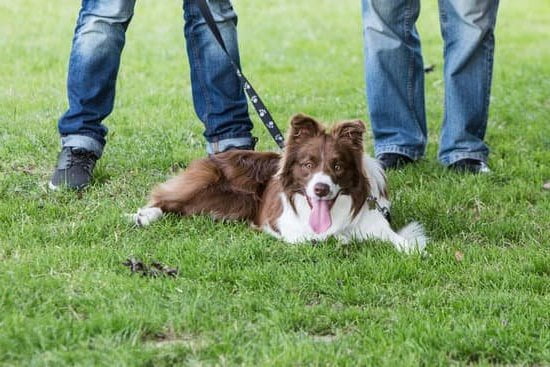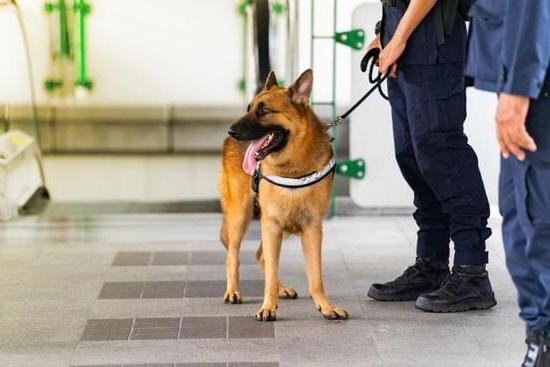Introduction
Dog Crate Training is the practice of using a crate to confinement and potty train your dog. The idea behind it is that since dogs naturally do not like to soil their sleeping area they can be taught to use the crate as a “den” and will only relieve themselves outside of it. This is also helped by keeping the indoor area clean; you should remove all soiled bedding and replace with fresh ones after each accident.
In addition to helping with potty training, dog crate training can also help in establishing regular feeding times for your pet. Setting up a consistent routine for meals will result in better digestion, healthier gums and teeth, better growth rates and development of healthier eating habits. Another benefit of dog crate training is the security it provides for your pup- having them in their own space can help reassure them when there are loud or chaotic noises from outdoors or from other animals inside your home. Lastly, crating can help reduce anxiety as they learn they can always return to their comfortable den whenever they need comfort or reassurance
Advantages of Dog Crate Training
Dog crate training is a powerful tool that can be used to create positive results with a variety of behaviors and situations. There are many advantages associated with using a dog crate when training your pet. Dog crates provide an area where your pup can relax and feel secure and safe, forming an ideal environment for learning and reinforcement of desired behaviors. Using a dog crate to manage behavior helps prevent exploring mischievous actions such as chewing on furniture or scavenging the home in search of discarded items such as food or toys. Establishing boundaries while dog crate training also ensures that pup understand they have limits, helping them develop strong self-control over time. Finally, the confined space gives pups space which can help reduce feelings of stress or anxiety in times of high stimuli such as being around large crowds or thunderstorms. By establishing clear boundaries, providing your dog with their own small space, reinforcing good behavior, and helping them learn to find calmness during stressful situations or environments–dog crate training can provide you with great long-term results!
Different Styles of Dog Crate Training Tools
Dog crate training tools come in a wide range of styles and sizes that can accommodate the size and needs of any type of dog. For small breeds, the most common type is the plastic airline-style dog crate, which typically comes with removable trays for easy cleaning. This style is ideal for housebreaking puppies since it provides a secure space that prevents them from roaming around the house unsupervised. For medium to large breeds, wire crates are usually the best option as they provide more visibility while still limiting access to other areas of the home. The two-door designs provide additional convenience, allowing owners to access one side while keeping their pet securely confined on the other side. A third type of dog crate is made from fabric and features soft sides that can easily be folded up for storage when not needed. This makes it particularly suitable for travel or introducing a new pet into an existing household, as it can easily be set up in unfamiliar environments without taking up too much space.
Understanding the Scientific Research Behind Dog Crate Training
Dog crate training is a commonly used tool to teach dogs basic obedience commands, housebreak them and establish good habits. It has long been recognized as an effective training aid but only recently have studies been conducted to validate its use. The scientific research behind dog crate training provides useful insights into why it works and how it can be incorporated into a successful dog-training regimen.
One of the main findings in the scientific research behind dog crate training is that it helps dogs learn spatial awareness. Through gradual introduction, the dog learns to identify the boundaries of his crate and understand that this space is their own personal area. By confining them in a confined space such as a kennel or a crate, they become aware of their surroundings and respond predictably when faced with different situations. In addition, constant exposure to structure creates familiarity which strengthens reinforcement effects, making it easier for dogs to modify unwanted behaviors.
Furthermore, research has shown that dog crate training can help reduce anxiety levels for some dogs by providing them with a secure environment where they feel protected and calm. With these benefits in mind, many trainers believe that crate training should be introduced during puppyhood, ideally around 8 weeks old. By introducing your puppy to their crate at an early age, you are creating an opportunity for positive conditioning that will yield better results later on.
Overall, the scientific research behind dog crate training reveals important insight into how this tool can contribute to effective canine obedience instruction and behavior modification strategies over time. Keep in mind, however, that while crates can contribute positively towards developing behavioral patterns; ultimately,. every individual dog’s needs must also be accounted for when determining the best approach to teaching new skills or modifying existing ones.
Exploring the Advantages of Using Dog Crate Training Tool
A Dog Crate Training Tool is an effective way to help train your pet. It can provide an enclosure for your pet and set boundaries in order to keep it from getting into trouble or feeling overwhelmed. Using a crate training tool can also help teach your pet the basic obedience commands such as “sit,” “stay,” and “come.” Crates also can provide a cozy spot for your pet to nap or take refuge while they are away from you.
Crate training can be used when introducing new objects, behaviors, and environments to decrease stress levels in a controlled manner. This type of training helps to ensure that all members of the family understand expectations and provides consistent reinforcements. Additionally, the act of placing your dog in a crate before entering unfamiliar places like dog parks and vet offices can help desensitize them to these situations because they will not be scared by the sights and sounds they encounter while they are in their secured area.
Furthermore, crates make it easier for you to teach potty-training techniques since accidents are much easier to clean if contained within a crate instead of on carpet or furniture. This type of setup also provides an ideal environment for mealtime because dogs are unable to scavenge for scraps or other items as easily when confined in their own space.
In summary, using a Dog Crate Training Tool is beneficial in teaching basic obedience commands as well as helping create stress-free experiences by providing familiar structures when encountering unfamiliar surroundings. They allow more efficient ways of cleaning up after accidents while also serving as spaces in which meals are consumed without scavenging mentalities taking root during mealtimes. Overall, these tools offer consistently positive reinforcement techniques resulting in well-trained pets with no fear when gone from home.
Determining the Correct Crate Size for a Dog
When crate training a dog, it’s important to make sure that you have the correct size of crate. An appropriately sized crate should be big enough to allow your pup to stand up, turn around, and lie down without feeling cramped. If the crate is too small it can cause discomfort and anxiety which can be detrimental to the training process. To determine what size of crate your dog needs take all three measurements – length, width, and height into account. The length should be measured from their snout to their tail while your pup lies down in a natural position. The width should be measured from shoulder blade to shoulder blade while they are standing up. Lastly, height should be measured from paw tip to shoulder blade when standing. Once you have the measurements match them up with one of the available sizes that best fits these numbers.
Once you’ve determined what size of crate will suit your pup best it’s also important to consider where you’ll place it as well as when and for how long it will be used for each day. It’s recommended that the average dog spend no longer than 4 hours at a time in a crate each day; however this number may change depending on individual needs. If possible, keep the space relatively quiet and comfortable (e.g., no direct sunlight or loud noises). Additionally, keeping treats or toys in their kennel may help ease anxiety associated with being confined as well as promote positive reinforcement throughout the training process. With these tips in mind you’ll have everything you need know about finding the right size of kennel for your pup!
Training Techniques to Help a Dog Feel Comfortable in the Crate
Dog crate training can be a great way to ensure that your pup gets used to their new space; however, it can be intimidating for some dogs to get used to being in a confined area. To help you get started with dog crate training, there are several helpful techniques that can make the process smoother and more comfortable for your pup.
One important tool to use during dog crate training is positive reinforcement. Reward your dog each time they enter their crate by giving them treats or offering affection and praise. This will help create favorable associations with the experience, showing your pup that being in the crate is fun and rewarding instead of something stressful or frightening.
You should also make sure that your pup’s crate is free of any distractions; turn off loud music or the television nearby before beginning their training, as otherwise they may be drawn away from entering the crate. Additionally, try tossing treats into the crate while encouraging them to go inside; this further creates positive feelings towards going inside and makes it a game for them. You should also leave one of their favorite toys in their many case so they have something to do when they’re in there. Finally, allow your pup ample time adjusting to their new space; don’t rush the process and only close the door when they’re comfortable being inside without panicking or trying to escape. With patience and consistency, you’ll soon have a happily crated pup!
Guidelines for Maintaining and Cleaning a Dog Crate
Cleaning a dog crate is an essential part of owning a pet, as it helps to keep your pet healthy and happy. Here are some helpful guidelines for maintaining and cleaning your dog crate:
1. Inspect the crate regularly for signs of damage or wear and tear to the base, sides and door. Make any necessary repairs or replacements as soon as possible.
2. Clean the sides of the crate with a damp cloth every day. This will help prevent bacteria build up and remove any dirt or debris that has accumulated.
3. Wipe down all surfaces of your crate including the interior liner with a mild detergent every week to ensure sanitization of the space. Use warm water if possible and make sure to rinse off all residue from soap suds once complete.
4. Replace the tray liner at least twice per month or when washing does not restore it’s original cleanliness level. This should be done using only a non-toxic cleaner that is designed for use in pet products specifically – never use chemical cleaners such as bleach or ammonia as these can be toxic to animals if ingested!
5. Disinfect the door and handle frequently since this is one area where pet germs tend to accumulate quickly due to excessive handling by humans and pets alike. Be sure you rinse off all residue after each cleansing session so that no traces linger around which can cause skin irritation in both people and pets!
Mistakes to Avoid During Crate Training
One of the biggest mistakes people make when crate training their pet is expecting too much, too soon. It’s important to remember that crate training can take considerable time and patience on your part. This means being consistent and teaching your dog gradually, one step at a time.
Another mistake is using the crate as punishment. A crate should never be used for this purpose because it can lead to anxiety and other behavior issues. Instead, use positive reinforcements such as treats or verbal praise whenever your pup enters the crate willingly. This will create a pleasant association with the space, helping it learn faster. Additionally, avoid placing food or water bowls in the crate; eating meals in crates may cause them to form negative associations with the space over time due to potential messes or spills.
Finally, try not to let your pup stay in its crate for extended periods of time every day. Long stays in confinement can also cause undue stress, so keep sessions short and sweet while reserving crate time only for certain activities like sleeping or calming down after exercise/playtime. When you are home and have eyes on them during supervised playtime outside of their cage, let them roam freely within safe boundaries!
Final Verdict
The verdict on dog crate training is ultimately a positive one. Although it can be time-consuming and difficult, many pet owners have found that it’s worth the effort. In fact, many experts believe that crate training offers several benefits.
For instance, it can help reduce anxiety in dogs who are prone to distress or fear when left alone for extended periods of time. Crate training also helps to foster good behavior around the home and ensures that dogs stay safe while unsupervised. Additionally, it can limit destructive behaviors like chewing furniture or digging holes in the backyard. Finally, it can create a sense of consistency for pets as well as their owners, making them more confident and happy as a result.
Overall, dog crate training does make a difference – both for pets and for pet owners looking for peace of mind that their furry friend is being kept safe and behaving properly when gone from home. It takes a bit of patience and dedication but with the right techniques, canine parents everywhere will find this tool invaluable in raising an obedient pup who loves spending time at home!

Welcome to the blog! I am a professional dog trainer and have been working with dogs for many years. In this blog, I will be discussing various topics related to dog training, including tips, tricks, and advice. I hope you find this information helpful and informative. Thanks for reading!





